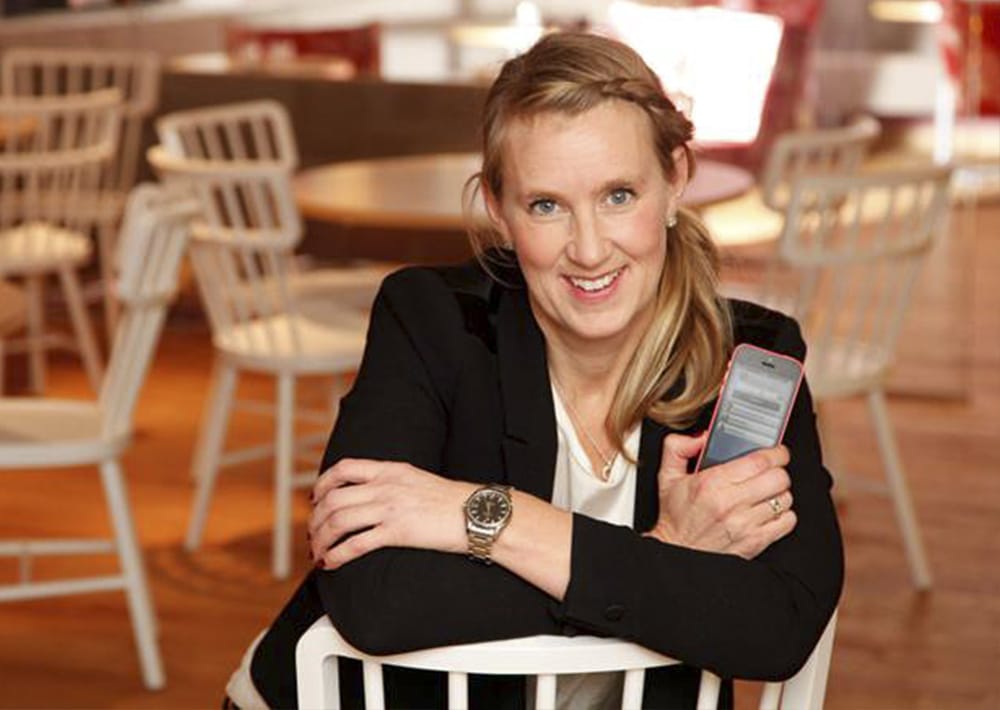
Five steps to digital transformation
A digital transformation business model from Daresay
At Daresay we know how difficult it is to digitally transform an organization – particularly large organization with long decision processes that have served them well in the past. Digital by its very nature is fast-moving, but that doesn’t mean you have to change the culture of an organisation over night to embrace it. Moving quickly can be done in stages where it’s easiest to implement first.
Based on our experience from transforming large and small, and new and old organisations, we have developed a five-step digital transformation business model that advances an organization and provides tangible value to all its stakeholders. The model has proved extremely effective in transforming organisations such as Länsförsäkringar AB – voted best digital bank three years running – into leading digital providers. Some companies climb step three with us first, and then go back a step or two and implement a transformation initiative. It can sometimes be a great way to “test the water” or protoype as we like to refer to it.
However, as each company’s digital transformation strategy is unique, so it’s the journey. Your company may start on a different step, but no matter where you start, in order to maximise your potential revisiting step one and climbing to the top of the digital transformation model, will deliver the best results.
Create a customer-centric vision
Step one begins with a customer-centric vision. Your vision and business strategy should focus on delivering an amazing customer experience. You have to give customers what customers want over the long-term rather than focusing on what will provide the best returns today, or which products and services are in the pipeline. Forecasting market trends, examining the leadership framework and assessing both your own and your competitors’ digital capabilities are all part of the first visionary step.
When we began working with Arbetsförmedlingen, the Swedish public employment service, their vision was to break the status quo, to become relevant again for employers in order to help people back into work. Something that we are helping them to achieve as they walk through the transformation steps.
Assess your organisation’s ability to deliver on the strategy
With a vision in place you can move onto an assessment of your organisation’s ability to deliver on the strategy. A key part of effective digital transformation is change management. Your organisation and the business processes you have in place are designed for your current path – and probably not one that fully embraces digital technology.
Creating an in-house digital start-up is often a great way to begin, this allows you to test your way forward, deliver results quickly and prove the value of digital investments to the entire organisation. However, at some point changes to the organisation will need to be made– whether it’s recruiting, replacing or training staff. Getting this right can only be done by mapping your organisation’s structure to the needs of your digital strategy.
A typical example of this can be seen at ASSA ABLOY. We originally came into the company as an additional organisational resource to help them reinvent door locks. Once our design and development team had co-created the “digital key”, ASSA ABLOY employed their own team of UX designers as they continue along their digital path.
Create the right value for your customers
As organisational change can take time; so moving onto the next step of creating the right value for your customers can be done in parallel. What do your customers really want? What are new innovators planning that will steal market share? Is the cash cow that you have relied upon for so long actually holding the company back?
Understanding your customers is the key to understanding your future. How you perceive them and how they actually act and feel can be very different. By meeting them, sharing their experiences, and using the data they provide about themselves, key insights can be gained that become instrumental in developing concepts and creating digital offerings.
For TV4 Fotbollskanalen.se we were able to design and build a new digital service for football fans in just three months by meeting and understanding what fans wanted.
Find your position in the digital eco-system
Design and development can only reflect customers’ desires when you truly know what they are, and where and how you fit into the digital eco-system. With digitalisation – and the opportunities it provides – come new partners and new providers. Your entire product portfolio may be hosted on a third-party site, you may start mining big data, new mobile services may be added to your offering, or your code may be made open source.
Identifying the ideal partners in your new ecosystem is a key strategic decision to ensure secure and smooth integration – at the front and backend – and ultimately to deliver a successful transition. The term digital, in its broadest sense, incorporates and much more. By understanding the opportunities and limitations the eco-system provides you can use it to drive digital transformation.
When we began designing the Speed Interview Service for Arbetsförmedlingen, we were limited by the technology, however, as we moved through the project and digital technology advances we were able to use a completely different platform and deliver the service to a much larger target group.
Measure and act on the data
Success of course, needs to be measured. One thing we can say about digitalisation is that data is available. Often too much data. By creating measurable business KPIs, the tools can be created to measure success as you begin to transition. Sometimes all you may need is an effective customer survey, other times the number of downloads or visits to a site will provide a measurable KPI. Identifying KPIs and monitoring them provides a key proof-point for all internal stakeholders to see and share.
When we created the VAB app, for Försäkringskassan, for instance, we saw within a space of a week that it was in the TOP5 most downloaded apps on the app store. And today, there are over 1 million app visits per month. The tools are there to measure success. And success is what we at Daresay strive to deliver.
If you’ve made it this far…
…and you still want to know more, we’ve included a short summary of an interview with Susanne Bergh, Head of Customer Success at the Swedish bank and insurance company, Länsförsäkringar AB, and the driving force behind the company’s digital transformation. You can read the entire interview here.
But while thinking over your next steps, bare this in mind. The timing has never been better. Act now, and you can make transformation your success story. All you need to do is be daring, to trust us, and we can make this journey together.
An interview with Susanne Bergh, Head of Customer Success at Länsförsäkringar AB
Courage is incredibly important in business today, and it’s only going to become more so as the world continues to change at pace. It’s easy to stand still if things are going smoothly, but you still need to prepare for change. Transformation is essential in order to survive over the long-term and do to this you have to be courageous. You need courageous leaders and courteous staff – collective courage.

Susanne Bergh, Head of Customer Success at Länsförsäkringar AB.
Taking risks in a traditional industry
Banking an insurance are traditional industries. Our operations are built on taking as little risk as possible. But the start-ups entering the market don’t think like that. They have different business models and make fast decisions. We need to think more like them and take more risks. We don’t always need to do lengthy pre-studies, we can act fast and learn from that.
Goal driven is far better than detail driven
Nobody enjoys working for a micro-manager, which is why I give my team goals to meet and dates to deliver. This responsible creates a dynamic environment where people pull in the same direction to deliver results. My job is to support them and create the right conditions necessary for success.
Working in this environment, where I could develop my own ideas, is what gave me the courage to grow in my role when I first joined the company back in 1989. I want to five people the same opportunity.
The Best Mobil Bank in Sweden.
A typical example of this is when I wanted to win Gold in the Swedish Mobile Awards. I told the team that we were going to stand on stage together and be presented with the Best Mobile Bank in Sweden Award. When the team asked how we had to do for that to happen, I told them I didn’t have the answers, they need to figure it out.
Rewarding collaboration
This is how we came into contact with Daresay. We couldn’t do it with our existing inhouse resources, so we assembled a team that could work collaboratively with us to make it happen. Designers, developers and strategists from Daresay moved into our premises and worked closely with other consultants and our team towards the same goal. Sure enough, one and a half years later we received the Best Mobile Bank in Sweden Award. Since then we’ve won the Red Dot Award together with Daresay. This success can be put down to providing our customers with the best and most relevant services.
Driving digital transformation
This success hasn’t just helped us as a team, the entire company gets a life from it. If ever there was a case for digitilisation and transformation this is it. Our success can be replicated throughout the organization, because we know how to do it. We just need the courage to change.